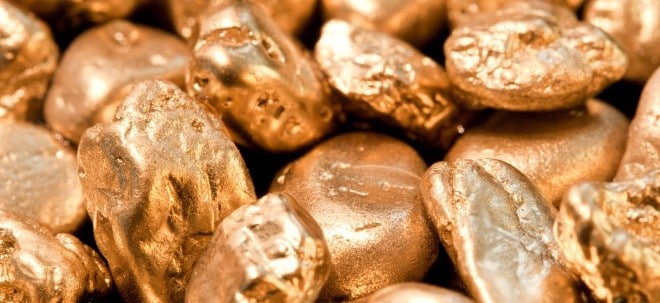hoffe ihr habt das wochenende gut überstanden ;-)
hab mir mal erlaubt den kaffee aufzusetzen....steht gleich neben dem rum,milch ist leider alle *gg*
naja,und dann hab ich da noch nen bissel was zum lesen mitgebracht,wenn auch nicht mehr druckfrisch,aber immo haben wir alle scheinbar anderes im sinn wie börse ;-)
wollen wir mal hoffe das es auch so kömmt......
werde mich nun wieder öfter an deck blicken lassen,also seht zu das ihr mir nicht in lumpen unter die augen kommt,sonst gibet ärger,wär doch gelacht wenn wir unseren kahn nicht wieder auf vordermann bekommen ;-)
Base metal earnings to take hit but future prospects improving
Posted: January 14, 2009, 1:57 PM by Jonathan Ratner
Mining, Infrastructure, earnings, base metals, commodities
The fact that commodity prices were hit hard in the fourth quarter is no surprise to anyone. Molybdenum had it the worst, falling 53%. Oil followed with a 51% decline, copper was down 49%, nickel fell 43%, aluminum dipped 34% and zinc dropped 33%. However, some have recovered slightly since the end of 2008.
As a result of the slowing global economy, demand for materials has weakened, which is having a significant negative impact on earnings. UBS analyst Brian MacArthur noted that this has been especially tough on concentrate producers with prior period adjustments.
“However, a number of companies have moved quickly to restructure high-cost operations, reduce capex, conserve cash, and prepare for a prolonged downturn,” he said in a research note.
The rapid decline in based metals during the second half of 2009 and particularly the fourth quarter is expected to result in significant provisional pricing (PP) adjustments for concentrate producers, particularly in copper, zinc and molybdenum as booked revenues are reversed, according to BMO Capital Markets.
Revenue in a given quarter is based on current prices but some sales are still subject to final pricing. “These pricing adjustments result in additional revenues in a rising price environment and reductions to revenue in a declining price environment,” analyst David Cotterell told clients.
He said PP is expected to impact larger diversified earnings by an average 3% in the second half of 2008, with notable earnings downgrades made to Xstrata plc (-7%) and Teck Cominco Ltd. (-20%). Smaller pure-play copper producers overall show greater leverage than this, Mr. Cotterell added.
As a result, BMO prefers exposure to the base metals sector through diversified producers such as BHP Billiton Ltd. and First Quantum Minerals Ltd.
Earnings estimates at UBS are meaningfully lower than current consensus estimates for a handful of companies. These include First Quantum, Inmet Mining Corp., Lundin Mining Corp., Quadra Mining Ltd., FNX Mining Co. Inc., Teck Cominco, Methanex Corp., Freeport-McMoRan Copper & Gold Inc. and Agrium Inc. However, it cautioned that consensus estimates are often not up to date and some do not factor in prior period settlements, which could explain some of the variance.
“Despite the significant drop in many input prices, we expect that operating costs have only declined slightly as the decreases in fuel, sulphur and sulphuric acid prices may not be immediately felt, and labour markets normally ease at a slower rate than the downturn in the economy,” Mr. MacArthur said. He also expects the impact of rising costs of consumables experienced during the third quarter have been partially carried through into the fourth quarter.
However, sentiment for the base metals market isn’t all grim. The major infrastructure development programs announced by many countries, which include rebuilding bridges, upgrading transportation systems, as well as public buildings and schools, could provide a much-needed lift.
“This type of development by nature tends to be metal-intensive,” Octagon Capital analyst Hendrik Visagie said in a research note. He expects China’s program that calls for US$538-billion in expenditures over two years will ramp up quickly starting in mid-February. As a result, China’s demand growth for metals is forecast to be between 5% and 8% in 2009.
“China’s demand growth, coupled with the drop in mine supply, should keep metal inventories down in the short term, and when the U.S. and other countries begin infrastructure development, we believe metal prices will increase significantly,” Mr. Visagie said. However, the U.S. program is expected to take longer to implement as a result of the need for congressional approval.
“Corrections of this magnitude are not uncommon within the commodity cycle; however, the velocity of the decline has been tenfold faster than in previous cycles,” said Blackmont Capital’s George Topping.
He told clients that the massive correction in such a short time gives producers very little time to adjust their ore reserve base to accommodate lower prices. As a result, their primary defence mechanism has been to shut down loss-making operations.
Meanwhile, many of the world’s mines have been operating at full capacity to take advantage of higher prices, so the best grades have probably already been mined. The same situation applies to development projects that have been frozen to preserve cash and allow further study at lower metal prices, Mr. Topping said.
While he thinks the supply response will sow the seeds of the next metals cycle, demand must first stop falling. Blackmont anticipates weaker global economic growth in the first half of 2009 but sees stabilization for developing economies like China and India in the second half of the year.
Jonathan Ratner |


 Thread abonnieren
Thread abonnieren


